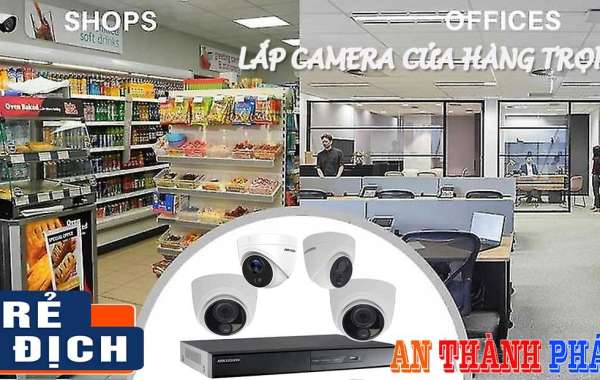Original Title: New Progress in Key Technologies for Underground Metal Mining Underground metal mine mining is a systematic project, including development, development and mining (as shown in Figure 1, underground mine mining model), each link requires blasting. Therefore, how to blast safely and efficiently is a subject for every miner to study. Fig. 2 Underground mining mode At present, metal mines are facing the key transition period of "from shallow to deep, from easy to difficult, from rich to poor", and are facing new challenges in theory, technology and equipment. In the face of the above challenges, the research on the key technologies of underground mining in metal mines is particularly critical. At present, the key technologies of underground mining in metal mines are mainly embodied in the following five aspects: drilling and blasting technology, transportation and lifting technology, rock reinforcement technology, paste filling technology and remote control technology. Around these five key technologies, this study systematically reviews their development history and new progress, and the key technology architecture of underground mining of metal mines is shown in Figure 2. Figure 2 Key technology architecture of underground mining in metal mines 1. Rock drilling and blasting technology Rock drilling and blasting technology is an important technology in the process of metal mining, and it is also a weak link in the long-term development of metal mining. Therefore, it is very important to continuously improve the efficiency of drilling and blasting for the safe and efficient mining of metal mines. At present, rock drilling and blasting technology is still the main means of underground mining, from the initial manual rock drilling to pneumatic rock drill, hydraulic rock drill, drilling jumbo (rotary drill, down-the-hole drill), and even the present rock drilling robot, rock drilling technology has gradually developed from mechanization to automation, intelligence and environmental protection. Expand the full text After a long period of research, drilling equipment suitable for various conditions has been developed at home and abroad. In recent years, with the improvement of drilling equipment, the United States, Canada and other countries have introduced open-pit drilling and blasting technology in underground mining, and medium-length hole sublevel drilling has been replaced by large-diameter stage deep hole, which has achieved good application results. For example, Sweden has developed a series of tunneling drilling jumbos, which have the advantages of high drilling efficiency, safe operation and low pollution; China has independently developed a set of drilling jumbos. The fully computerized three-arm rock drilling jumbo, which integrates drilling and charging operations, has the advantages of simple operation, high safety factor and low construction cost. These equipments ensure the quality and efficiency of rock drilling, reduce labor intensity and operation risks, and achieve a new level of automation, intelligence and environmental protection. At the same time,dth drill bits, due to the different conditions of underground mining and the different application conditions of roadway excavation and mining operations, the blasting methods commonly used in traditional underground mines are diversified, such as millisecond blasting, extrusion blasting and smooth blasting, which improve the blasting quality to a certain extent. With the development of blasting technology, the traditional blasting technology is gradually developing towards precision blasting, green blasting and intelligent blasting. The mine precise blasting system is constructed mainly through the fine design of hole pattern parameters, the theoretical study of blasting energy consumption and the simulation of blasting scheme. The green blasting mainly uses new incendiary agents instead of explosives. ? No blasting gas is generated, which greatly improves the underground air environment and realizes underground green blasting; intelligent blasting is mainly designed by blasting intelligence. Intelligent equipment, intelligent prediction of blasting vibration and automatic identification of residual holes constitute an intelligent blasting system to realize the intellectualization of blasting technology. In the new era of technological progress and innovation, rock drilling and blasting technology has developed from traditional methods to non-blasting rock technology such as mechanical and physical rock breaking. For example, the continuous mining machine is used for mechanical rock breaking of medium hard and below ore rock, which has high working efficiency and good construction conditions and is beneficial to ground pressure control; The physical rock breaking technology of thermal crushing overcomes the limitation of rock breaking by mechanical energy alone, does not produce dust and sparks, and greatly improves the working environment. However,DHD Drill bit, due to the problems of high energy consumption, high cost and serious wear and tear of props, it has not yet been popularized in China. At the same time, at this stage, China started late in the research and development of information technology and artificial intelligence technology, and the related core technologies of intellectualization are still mainly dependent on foreign countries. Therefore, at present, continuous mining has not been really realized in hard rock mines in China. 2. Transportation and lifting technology Transportation and lifting system plays an extremely important role in the production of underground mines. Through transportation and lifting, all links can be connected into an organic whole, so as to ensure the normal production of mines. The stope ore removal has experienced the development process of "manual, rail and trackless" transportation technology, and has formed a new situation from rail as the main and trackless as the supplement to trackless as the main and rail as the supplement. Trackless self-propelled equipment transportation in underground mines began in the 1960s. With the improvement of underground trackless equipment, underground trackless mining technology has developed rapidly, which promotes the transformation of underground mining technology and is the development trend of underground mining at present. Scraper is used for short-distance ore removal in the stope, which has the advantages of convenient operation, reliable work, high ore removal efficiency and flexible operation. Underground truck is used for long-distance ore removal in the pit. At present, it is widely used in foreign countries, but rarely used in China. With the increase of mining depth, the lifting distance is increasing, and the lifting technology is facing more and more challenges, accompanied by the increase of lifting costs of various ore materials. Therefore, it is particularly important to develop deep mine ore hoisting technology. On the whole, it is the future general trend of mine transportation and lifting to develop in the direction of large-scale, heavy load and high automation. After a long period of development, in deep mining, the vast majority of mines use rail transport, belt conveyor or trackless equipment to carry out multi-level shaft lifting. For example, in TauTona Gold Mine in South Africa, dth rock bit ,mining dth bit, a three-stage shaft lifting method is used, and then the transfer between shafts is carried out by belt or trackless equipment. Although the traditional open belt conveyor system has a simple structure, it is easy to cause dust and slide, pollute the underground environment, and has poor climbing ability and low safety factor. SiCON has developed a closed belt conveyor system to prevent sliding and dust during transportation. The transportation speed can exceed 3 m/s and the lifting slope can reach 36 °. Appropriate improvement of the system is expected to be applied to the ore transportation and lifting in deep mining in the future. At present, hydraulic lifting is mainly used in deep-sea mining. In recent years, some researchers have tried to apply hydraulic lifting in deep mines. This process can be carried out continuously, which is easier to realize the automation and intellectualization of the lifting process. However, the use of hydraulic lifting requires the establishment of ore crushing system and grinding system in deep mines, which is difficult to be applied in practice at present. At the same time, there is also an innovative idea of magnetic levitation elevator, but it still needs to be studied in depth and meticulously. These new technologies, new methods and new processes have injected fresh blood into the field of mine transportation and lifting, and greatly promoted the innovation and innovation of transportation and lifting technologies, methods and processes. 3. Strata reinforcement technology Metal mines are mainly aimed at reinforcing weak, broken and highly stressed rock strata. Rock reinforcement technology can be divided into passive support and active support. Passive support can not change the internal structure of rock, but can only passively bear the deformation of surrounding rock, such as traditional wood support, masonry support and steel arch support. Active support can change the internal structure of rock Actively strengthen the strength of rock strata, such as bolt (anchor cable), bolt-grouting, bolt-shotcrete and bolt-mesh-shotcrete and other support methods, in which bolt-grouting support, bolt-shotcrete support and bolt-mesh-shotcrete support belong to composite support. Bolt-shotcreting support has become the main reinforcement technology of rock strata in metal mines. Full-length grouted anchor is composed of full-length grouted bolt and grouted bolt, which greatly improves the anchoring strength and has a good promotion value and application prospect in engineering practice. Shotcrete has developed from dry shotcrete to wet shotcrete The working environment is improved, and the spalling of the rock stratum is prevented. The effective combination of shotcrete and bolt can control the free deformation of surrounding rock within a certain range, redistribute the stress of surrounding rock, and effectively prevent the stripping and falling of rock strata. With the rapid development of science and technology, the use of advanced equipment related to bolting and shotcrete support is increasing at home and abroad. For example, foreign countries have developed a series of equipment such as anchor trolley, wet spraying trolley and hanging net trolley. At the same time, China has independently developed tire anchor trolley (crawler anchor trolley), mining wet spraying machine and two-arm concrete wet spraying machine, which not only improves work efficiency, but also reduces labor intensity and ensures operation safety. To a certain extent, the mechanization and intellectualization of rock reinforcement technology have been realized. After several technical innovations, the rock reinforcement technology has developed from the traditional passive single support to the new active composite support, and will show the development trend of mechanization and intellectualization in the future, in order to improve the safety and operation efficiency. 4. Paste filling technology Solid waste pollution, water pollution, air pollution and land occupation caused by metal mining are very serious. With the development of filling mining technology and equipment, paste filling technology provides a new idea to solve the problems of traditional mining and environmental pollution caused by metal mining. The whole tailings and other solid wastes are prepared into saturated, non-bleeding, toothpaste-like structural flow slurry for paste filling, which can solve the two major hidden dangers of tailings reservoir and goaf. So as to ensure the sustainable development of the mine. Compared with the traditional water-sand filling, paste filling has the characteristics of "three noes", namely, no stratification, no segregation and no dehydration of slurry. At present, China has built the world's first industrial paste filling test platform, covering an area of about 2 000 m ², with more than 200 sets of equipment, which has the characteristics of high industrial precision, full function and intelligence, and can carry out experiments, parameter detection and guide system design and engineering practice for the whole process of paste filling technology, especially for multi-pipe diameter, multi-direction and multi-flow. Compared with the traditional method, the detection result is closer to the reality. The common basic theory of each process of metal ore paste filling is metal ore paste rheology, which takes paste rheological constitutive equation as the research content, and takes theoretical calculation, rheological experiment and numerical simulation as the main research means to meet the engineering requirements of four process links in paste filling, namely, tailings thickening, paste stirring, paste transportation and filling solidification. Thickening technology aims to obtain a stable and appropriate underflow concentration, which lays the foundation for the preparation of qualified paste; stirring technology makes the materials mixed evenly ? Provide conditions for fluidization and mechanical property homogenization of paste pipeline transportation; transportation technology pursues low energy consumption And that fil technology realizes the uniform distribution of the strength of the fil body and the full top contact rate. The above four processes correspond to the four key technologies of paste filling. Paste filling technology has the rich connotation of "safety, economy, environmental protection and high efficiency", which is an important technical support for the green mining system of metal mines, and has been listed as a demonstration technology by the relevant ministries and commissions of China, and is a research hotspot in the field of global mining. The core theoretical architecture of paste filling is shown in Figure 3. Figure 3 Figure 3 Paste filling core theory system architecture 5. Remote control technology With the development of science and technology, mining technology is also progressing, from the initial manual mining to mechanized mining, and then to the present automatic mining, intelligent mining, whether automatic mining or intelligent mining, remote control is the core technology. Therefore, remote control technology will play an irreplaceable role in modern mining, and it is an important technical means for the development of modern mining. Remote control technology is a relatively mature control technology in the world, and it is also a direction of underground mine development, including drilling remote control, charging remote control, ore drawing remote control and so on. However, this technology is a supporting application technology after the overall development of a country's industry to a certain height, and has not yet been fully promoted in China. The key technologies of remote control are mainly embodied in three aspects: remote sensing of mining environment, remote operation of mining process and remote management and control of mining system, so as to realize the functions of automatic sensing and analysis, unmanned operation, remote allocation,dth drilling hammer, automatic early warning and remote decision-making. Break through the key technology of intelligent mining of underground metal mines, improve the market competitiveness of mining enterprises and mining equipment manufacturing enterprises in China, and provide technical support for China to move from a big mining country to a powerful mining country. Return to Sohu to see more Responsible Editor:. wt-dthtools.com
Suche
Beliebte Beiträge
-
 Купить диплом с бесплатной доставкой: Успешное будущее на расстоянии одного заказа
Durch worksale worksale
Купить диплом с бесплатной доставкой: Успешное будущее на расстоянии одного заказа
Durch worksale worksale -
 Квартиры на сутки Минск
Durch worksale worksale
Квартиры на сутки Минск
Durch worksale worksale -
 Lắp Camera Kho Hàng Chất Lượng 4k Siêu Nét
Durch camerawifigiare chuyen
Lắp Camera Kho Hàng Chất Lượng 4k Siêu Nét
Durch camerawifigiare chuyen -
 Купить диплом любого учебного заведения России
Durch worksale worksale
Купить диплом любого учебного заведения России
Durch worksale worksale -
 Unveiling the Excellence of Aussie Basket's Best Australian Hot Sauce Collection
Durch aussiebasketau
Unveiling the Excellence of Aussie Basket's Best Australian Hot Sauce Collection
Durch aussiebasketau



